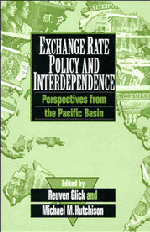1 - Overview
Published online by Cambridge University Press: 04 May 2010
Summary
Since the collapse of the Bretton Woods system of fixed exchange rate parities in the early 1970s, countries have been largely on their own in making choices about their exchange rate arrangements. Most countries have moved away from pegging to a single currency toward either pegging to a basket of currencies or adopting a more flexible arrangement under which the domestic currency is frequently adjusted. In large part this movement was prompted by a desire to liberalize financial markets, maintain some national autonomy over macroeconomic policy, and at the same time avoid the need for a system of widespread international capital controls.
This is especially true among Pacific Basin countries, which in the past fifteen years have undertaken substantial financial reform, removing barriers to domestic and international capital flows. Under these circumstances, national economies have become increasingly influenced by foreign developments. Greater international interdependence has complicated the conduct of domestic monetary policy and led to greater exchange rate flexibility as individual countries have sought to insulate themselves from foreign disturbances.
Because of the diversity of historical backgrounds, stages of economic development, and financial environments, the Pacific Basin region offers a wide variety of approaches to exchange rate policy. Some countries still peg their currency to a single foreign currency, while some peg to a basket of currencies. Other countries allow varying degrees of flexibility in their exchange rates.
- Type
- Chapter
- Information
- Exchange Rate Policy and InterdependencePerspectives from the Pacific Basin, pp. 1 - 14Publisher: Cambridge University PressPrint publication year: 1994



